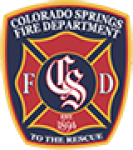When thunder roars, go indoors!

When you are outside and see a storm moving in, you need to be extremely careful. If you can hear thunder, you are within striking distance of lightning. Look for shelter inside a home, large building, or a hard-topped vehicle right away. Do not go under tall trees for shelter. There is no place outside that is safe during a thunderstorm. Wait at least 30 minutes after the last thunder before leaving your shelter. If you are in or on open water, go to land and seek shelter immediately.
If you feel your hair stand on end, that means lightning is about to strike, squat low to the ground on the balls of your feet. Place your hands over your ears and your head between your knees. Make yourself the smallest target possible and minimize your contact with the ground. Do not lie flat on the ground. This is a last resort when a building or hard-topped vehicle is not available. If a person is struck by lightning, call 9-1-1 and get medical care immediately. Lightning strike victims carry no electrical charge; attend to them immediately and check their breathing.
Action Steps You Can Take
LOCAL FACT:
Colorado has approximately 530,000 lightning strikes per year. NO PLACE outside is safe when thunderstorms are in the area!
Indoor safety
- Unplug appliances and other electrical items, like computers, and turn off air conditioners. If you are unable to unplug them, turn them off.
- Stay off corded phones, computers, and other electronic equipment that put you in direct contact with electricity or plumbing.
- Stay away from windows and doors.
- Avoid washing your hands, bathing, doing laundry, or washing dishes.
- Never work on plumbing in the home during a thunder and lightning storm.
Last resort options
- Immediately get off elevated areas such as hills, mountain ridges or peaks
- Never lie flat on the ground, shelter under an isolated tree or use a cliff or rocky overhang for shelter
- Immediately get out and away from ponds, lakes and other bodies of water
- Stay away from objects that conduct electricity (barbed wire fences, power lines, windmills, etc.)
You can download and print this Lightning Safety flier for more information.

